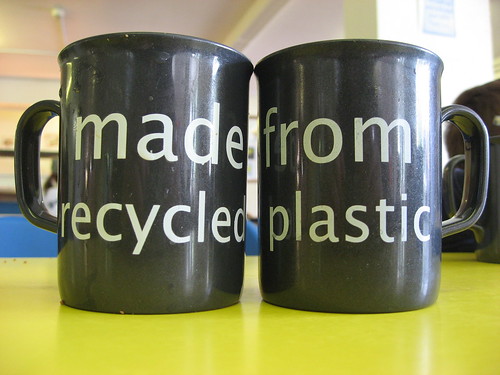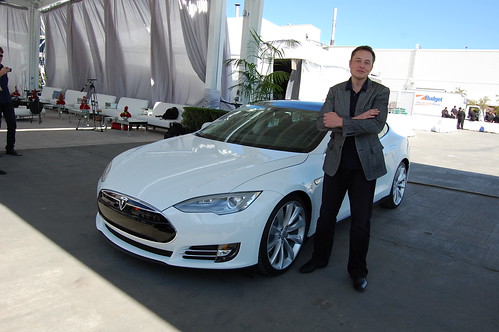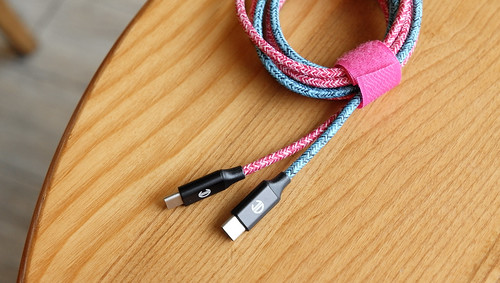
Plastic recycling has had some success – but oil companies aren’t helping. CC-licensed photo by lwicks_2000 on Flickr.
You can sign up to receive each day’s Start Up post by email. You’ll need to click a confirmation link, so no spam.
A selection of 11 links for you. Just me, or is it hot in here? I’m @charlesarthur on Twitter. Observations and links welcome.
As China boomed, it didn’t take climate change into account. Now it must • The New York Times
Steven Lee Myers, Keith Bradsher and Chris Buckley:
»
China has always had floods, but as Kong Feng, then a public policy professor at Tsinghua University in Beijing, wrote in 2019, the flooding of cities across China in recent years is “a general manifestation of urban problems” in the country.
The vast expansion of roads, subways and railways in cities that swelled almost overnight meant there were fewer places where rain could safely be absorbed — disrupting what scientists call the natural hydrological cycle.Faith Chan, a professor of geology with the University of Nottingham in Ningbo in eastern China, said the country’s cities — and there are 93 with populations of more than a million — modernized at a time when Chinese leaders made climate resiliency less of a priority than economic growth.
“If they had a chance to build a city again, or to plan one, I think they would agree to make it more balanced,” said Mr. Chan, who is also a visiting fellow at the Water@Leeds Research Institute of the University of Leeds.
As early as 2013, Mr. Xi promised to build an “ecological civilization” in China. “We must maintain harmony between man and nature and pursue sustainable development,” he said in a speech in Geneva in 2013.
The country has nearly quintupled the acreage of green space in its cities over the past two decades. It introduced a pilot program to create “sponge cities,” including Zhengzhou, that better absorb rainfall. Last year, Mr. Xi pledged to speed up reductions in emissions and reach carbon neutrality by 2060. It was a tectonic shift in policy and may prove to be one in practice, as well.
The question is whether it is too late. Even if countries like China and the United States rapidly cut greenhouse gases, the warming from those already emitted is likely to have long-lasting consequences.
«
(Via John Naughton)
unique link to this extract
Three Americans create enough carbon emissions to kill one person, study finds • The Guardian
Oliver Milman:
»
The lifestyles of around three average Americans will create enough planet-heating emissions to kill one person, and the emissions from a single coal-fired power plant are likely to result in more than 900 deaths, according to the first analysis to calculate the mortal cost of carbon emissions.
The new research builds upon what is known as the “social cost of carbon”, a monetary figure placed upon the damage caused by each ton of carbon dioxide emissions, by assigning an expected death toll from the emissions that cause the climate crisis.
The analysis draws upon several public health studies to conclude that for every 4,434 metric tons of CO2 pumped into the atmosphere beyond the 2020 rate of emissions, one person globally will die prematurely from the increased temperature. This additional CO2 is equivalent to the current lifetime emissions of 3.5 Americans.
Adding a further 4m metric tons above last year’s level, produced by the average US coal plant, will cost 904 lives worldwide by the end of the century, the research found. On a grander scale, eliminating planet-heating emissions by 2050 would save an expected 74 million lives around the world this century.
«
I guess we should round up the average Americans?
unique link to this extract
UK already undergoing disruptive climate change • BBC News
Roger Harrabin:
»
The UK is already undergoing disruptive climate change with increased rainfall, sunshine and temperatures, according to scientists.
The year 2020 was the third warmest, fifth wettest and eighth sunniest on record, scientists said in the latest UK State of the Climate report.
No other year is in the top 10 on all three criteria.
The experts said that, in the space of 30 years, the UK has become 0.9C warmer and 6% wetter.
The report’s lead author Mike Kendon, climate information scientist at the UK Met Office, told BBC News: “A lot of people think climate change is in the future – but this proves the climate is already changing here in the UK.
“As it continues to warm we are going to see more and more extreme weather such as heatwaves and floods.”
«
Cleverly timed, I thought, coming just after London in particular was hit by colossal downpours at the weekend.
unique link to this extract
Instagram influencer Hushpuppi’s rise was allegedly fueled by cyber scams • Bloomberg
Evan Ratliff:
»
BEC [business email compromise] attacks started appearing roughly a half-dozen years ago, escalating each year until they surpassed all other forms of internet fraud. The FBI reports there were almost 20,000 such scams against American businesses in 2020 alone, accounting for $1.8bn in losses, though the variety of BEC crimes can make totals hard to pin down. Crane Hassold, the senior director of threat research at the cyberdefense company Agari Data Inc. and a former FBI analyst, likes to define a BEC as “a response-based impersonation attack that’s requesting something of value”—basically, posing as a legitimate business to trick people into giving away their money.
No matter the flavor, a BEC scam generally begins with someone hacking into a corporate email account often using social engineering tactics like phishing. Once inside, the perpetrators don’t steal anything, not at first. Instead they quietly begin forwarding copies of incoming and outgoing email to themselves. Then they wait. “They watch it for a number of weeks or months, looking for details of certain payments that are going out, understanding who their customers are, looking at communication patterns,” Hassold says. When they spot an invoice coming in or out, they “use that intelligence to insert themselves into an actual payment that is supposed to be due.”
From there the scam can work two ways: If the scammers have compromised the email of the intended recipient of the payment, they simply create an invoice identical to the real one, swapping in their own bank account details, and resend it from the recipient’s email (often with apologies for the mix-up). If, on the other hand, they’ve compromised the sender, they might send a follow-up invoice from a “spoofed” email that appears at first glance to match the payee’s, or even create an entire company and website, one letter off from the real one. In either case, [innocent] Phil in accounting sees an email that, without careful scrutiny, matches the ones he receives every day.
«
And then Phil sends the money to that account and it’s lost forever. My bank calls me if I send any substantial amount of money to a new account; my solicitors tell me to call them to get their bank details. People are jumpy about BEC. Even so it carries on.
unique link to this extract
Brownsville, we have a problem • Protocol
Anna Kramer:
»
For Cameron County and Brownsville, Musk’s money is a bit like his rockets. The Starship prototype was a gleaming vision for the future of space exploration, but its explosion was devastating to the natural environment. Musk’s determination to build a spaceport and town that will one day launch hundreds of people to Mars has brought with it the promise of jobs, economic revitalization and an influx of wealth to one of the poorest and least-connected places in America. But the investment will also bring wealthy outsiders to a culturally vibrant, family-oriented border town that is proud of its history and the people who’ve lived there for generations, a town full of people skeptical that the money and prestige Musk is offering might be anything more than a poison pill.
SpaceX’s investment likely does mean a change in economic status and power for Brownsville. But the money and vision of the world’s second-richest man could also upend the culture and values that make Brownsville special to its community, a fear that has riven the people of this usually quiet place.
«
A lovely portrait of the (don’t say sleepy don’t say sleepy don’t say sleepy) sleepy (dammit) town near which Elon Musk is trying to build a sort of Starbase. It feels like something out of Interstellar.
unique link to this extract
NHS data injection: will it hurt? • PC Pro
James O’Malley on the row about the NHS’s plans to collect and centralise patient data:
»
At the heart of the controversy is a trade-off between privacy for the individual and the potential improvements to healthcare that can be achieved with research based on a dataset as richly detailed as the one held by the NHS.
“The really big moment for me was when we did a data collection for diabetic retinopathy screening,” said [Dave] Roberts [head of primary care information at NHS Digital and one of the architects of the new system]. He describes how by centrally collecting data on diabetes patients and inviting those judged at risk for a screening, early interventions can be made to limit or even reverse deterioration. “We were actually changing people’s lives,” he said.
The GP diabetes data is useful on a broader level too, as it feeds into the National Diabetes and Obesity Audits, which identify more effective and efficient treatments.
Roberts also points to how GP data was critical to research carried out by the NHS’s Learning Disabilities Observatory, and led directly to improved care for those patients when they are treated by NHS services. “We’ve probably not shouted enough about the power of data,” conceded Roberts. “I think this is one opportunity to shout that quite loud.”
In terms of how the data is used in research, Roberts argues that it’s a “myth” that NHS Digital is “selling” the data to outside companies for research. Charges only cover costs, and applications to use the data are both vetted and undergo a “data minimisation” process to strip data down to the bare minimum of what is required.
But [Phil] Booth [the coordinator of MedConfidential, a group that’s campaigning against the new data regime] remains concerned due to the track record of some of the companies and organisations that take the data. His site has a long list of organisations — including some NHS bodies — that have previously been found to be in breach of their obligations.
“When audited, [some companies have] been discovered to be breaking the law, but all of them are still getting data,” he said. “They might have had to delete a particular dataset, but they are all customers, and they’re all still receiving data.”
«
Fresh warning over rip-off locator forms on Google – BBC News
Chris Fox:
»
Rip-off websites which charge people for free Covid-19 passenger locator forms feature at the top of Google search results, the BBC has found.
Airline Ryanair said passengers should be “extra vigilant” and only download forms from the official website. The passenger locator form is designed to help airlines contact people in the event of a coronavirus outbreak.
Google said it had removed several ads but the BBC found some still topped its search results on Wednesday.
“It’s no surprise that these copycat firms have found yet another route to try and make money out of people for something that is free,” said Guy Anker, deputy editor of consumer website Money Saving Expert. While selling passenger locator forms is not illegal, Mr Anker said the rip-off websites were “devious”.
Google’s policy is to ban ads for unofficial websites selling government documents. But in May, the BBC reported that rip-off ads for travel visas, driving licences and other documents topped Google search results every time it checked during a 12-month investigation.
«
You’d think Google would just get an intern to program this as a search and zap the companies that pop up. Or get the intern to run the program and block every advertiser attempting to ride on this.
unique link to this extract
The recycling myth: a plastic waste solution littered with failure
Joe Brock, Valerie Volcovici and John Geddie:
»
In early 2018, residents of Boise, Idaho were told by city officials that a breakthrough technology could transform their hard-to-recycle plastic waste into low-polluting fuel. The program, backed by Dow Inc, one of the world’s biggest plastics producers, was hailed locally as a greener alternative to burying it in the county landfill.
A few months later, residents of Boise and its suburbs began stuffing their yogurt containers, cereal-box liners and other plastic waste into special orange garbage bags, which were then trucked more than 300 miles (483km) away, across the state line to Salt Lake City, Utah.
The destination was a company called Renewlogy. The startup marketed itself as an “advanced recycling” company capable of handling hard-to-recycle plastics such as plastic bags or takeout containers – stuff most traditional recyclers won’t touch. Renewlogy’s technology, company founder Priyanka Bakaya told local media at the time, would heat plastic in a special oxygen-starved chamber, transforming the trash into diesel fuel.
«
However, it didn’t work. But because plastics come from oil, oil companies hate the idea of “polluter pays” charges on plastic.
»
The American Chemistry Council (ACC), an industry group whose membership is dominated by plastics makers, says polluter-pays measures would hurt the economy. It’s urging US lawmakers instead to ease regulations on and provide incentives to advanced recycling companies.
«
Which takes us back to the beginning, above, which means nothing improves.
unique link to this extract
When will it get too hot for the human body to survive? • Slate
Matthew Lewis:
»
A dry heat feels comfortable because the evaporation happens so fast that you don’t even notice the sweat on your skin. (This is also why dehydration is a huge risk in desert climates—while you feel the dry air is helping you tolerate the heat, you’re also losing water from your body the whole time. “Hydrate or die” is not just a clever slogan; it’s good science.)
Now suppose you’re in the same amount of heat, but in Palm Beach, where the air is incredibly humid. The air is already holding all the water vapor it can hold. So your sweat stays on your skin, and the heat that the sweat is supposed to remove from your body … stays in your body, and accumulates.
Your body has lost its ability to shed heat, and so your core temperature starts creeping up to approach the temperature of the air around you. Let the process go on long enough, and body temperature rises from comfortable 98ºF to deadly 108ºF.
That is why the temperature isn’t enough to know if the human body can survive. You need to know the “wet-bulb temperature.” The term comes from the bulb of a typical mercury thermometer. If you wrap a thermometer bulb with a piece of wet cloth and put it in a hot room, evaporation off the cloth will lower the temperature reading of the thermometer to a point that is cooler than the room; the bulb is functionally “sweating.” But if you increase the humidity of the room enough, the temperature of the water vapor in the air will reach equilibrium with the water on the wet cloth, at which point evaporation no longer results in heat loss. So the bulb is sweating, but the mercury will continue to rise.
«
(Via John Naughton)
unique link to this extract
Google bans ‘sugar daddy’ apps from Play Store • Android Police
Ryne Hager:
»
If somehow you aren’t familiar with the term, a “sugar daddy” is more than a caramel candy on a stick. In the more common vernacular, a sugar daddy is a person — usually an older man, but you could have a “sugar mommy” or maybe a gender-neutral “sugar parent?” — that spends or gives money in what is typically a transactional relationship, often for sexual favors.
I don’t judge, different people enjoy different things, and if all parties are consenting with full knowledge, I don’t see how an arrangement like that really harms anyone. But, it seems Google does care, though the company is clear it’s not objecting to the nature of the relationship, merely the fact that they’re often sexual relationships with a perceived compensation basis, and the company has a blanket ban on sexual content — at least partly ignoring the primary impulse for many customers behind more generalized dating apps like Tinder and Hinge, as well as many of the messages that even mainstream dating app users swap.
We’ve reached out to Google for more information behind the ban and the precise logic that targets sugar-dating apps while ignoring other potentially sexualized dating apps. But, in the meantime, starting on September 1st, sugar people of all types will have to either stick to websites or sideload their sugar-dating apps — this is Android, you can still get your apps from wherever, unlike iPhones.
«
I’m guessing that the existing apps won’t stop working? Plus they have a whole month to, what, get downloaded in a hurry by “daddies” and, uh, the other side? It’s a weird move.
Chromebook growth hits 75% in Q2 2021 worldwide, outperforming other PC market categories • Canalys
»
The latest data from Canalys shows the worldwide PC market (including tablets) posted yet another quarter of annual growth, with shipments up 10% to 121.7m units. Chromebooks continued to outperform the rest of the industry product categories, posting 75% annual growth and a shipment volume of 11.9m units. Tablet shipment growth has begun to stabilize, with an increase in Q2 of just 4% year-on-year to 39.1m units.
Chromebook vendors have doubled down on investments in the product category and most have continued to see strong returns in terms of growth. HP maintained pole position with shipments of 4.3m units and growth of 116% in Q2. Lenovo took second place with 2.6m units shipped increasing shipments by 82% from a year ago. Acer secured a top-three position with growth of 83.0% propelling it above 1.8m units in shipments. Dell and Samsung made up the remainder of the top five, with the former being the only leading vendor to suffer a shipment decline.
«
Creeping up: Chromebooks may be starting to capture that schools-to-university-to-work pipeline. For scale, Apple still sold more iPads than the whole Chromebook market, but that might not stay true for long.
unique link to this extract
| • Why do social networks drive us a little mad? • Why does angry content seem to dominate what we see? • How much of a role do algorithms play in affecting what we see and do online? • What can we do about it? • Did Facebook have any inkling of what was coming in Myanmar in 2016? Preorder Social Warming, my forthcoming book, and find answers – and more. |
Errata, corrigenda and ai no corrida: none notified












